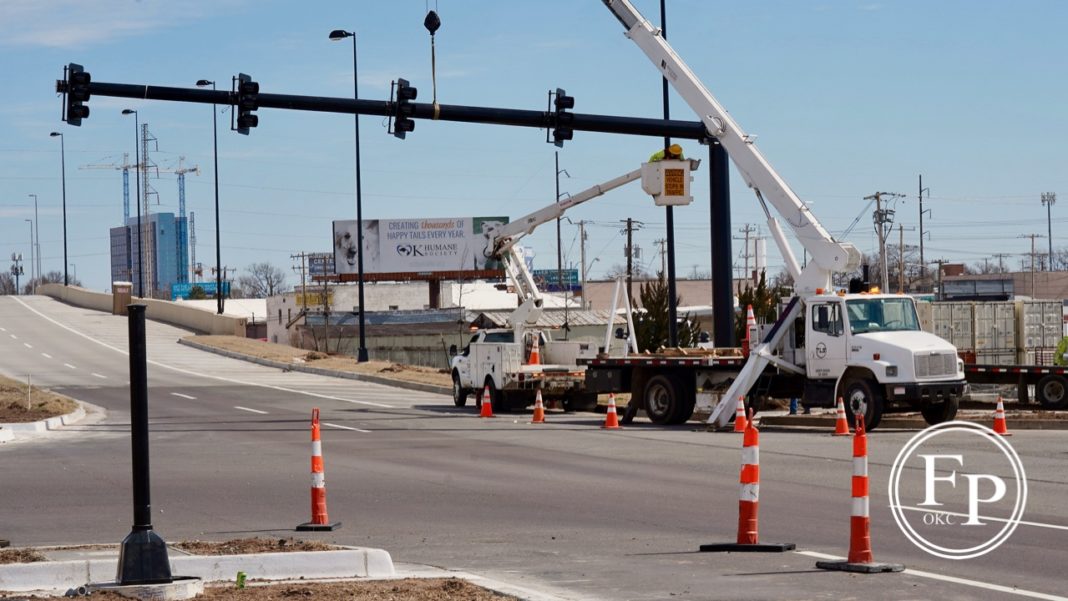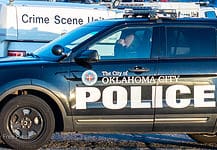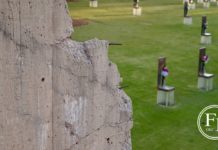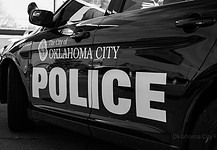Last Updated on March 2, 2020, 11:50 AM | Published: March 2, 2020
Even with relatively mild winter weather, Oklahoma City Boulevard was not complete by the end of February as promised by the Oklahoma Department of Transportation.
And, work is progressing but still not complete on signals at the dangerous intersection of Oklahoma City Boulevard and Klein Avenue west of downtown.
OKDOT and the City of Oklahoma City had not planned for that intersection to be signalized until a later date after the boulevard was handed off to the City.
But, just days after the boulevard was opened in August, Free Press was first to expose the dangers of the intersection showing auto-to-auto crashes beginning to add up.
We continued to publish follow-up reports using Oklahoma City Police crash statistics as crashes continued at the intersection. Public pressure then brought about an accelerated timetable for adding signals.
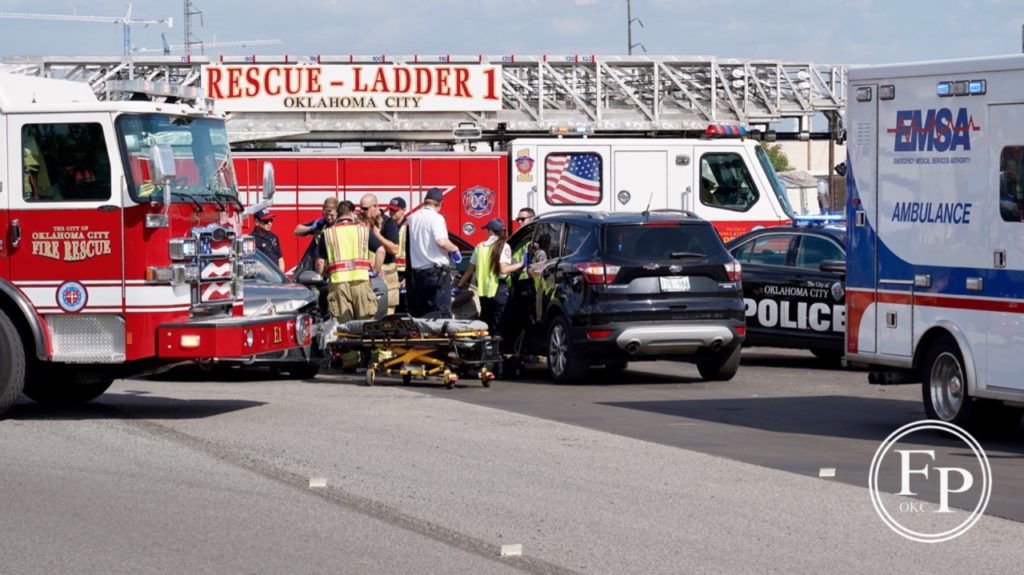
Progress, but not complete
City Engineer Eric Wenger told Free Press on Friday that OKDOT had been citing the end of February in their discussions about completion of the new boulevard and finishes to intersecting streets near the boulevard.
But, on March 1, irrigation systems for the trees that will be planted along the boulevard, intersecting street finishes, and lighting along the boulevard were still not complete.
Wenger said that Walker Avenue both north and south of the intersection still had significant work remaining before being complete. South of the boulevard, the west side of Walker is still open and waiting for concrete to be poured.
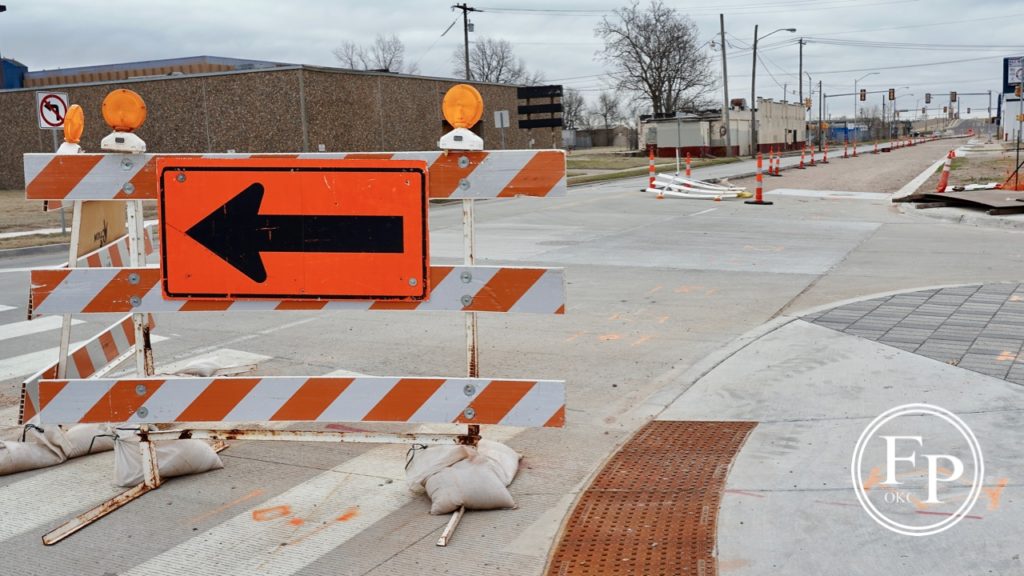
Especially the area around the intersection of Oklahoma City Boulevard and Klein has not received final reconfiguration.
To alleviate some serious traffic problems that pose dangers to pedestrians, pedal bike riders, and auto travelers, the City is having OKDOT reconfigure Sheridan west of Western into a two-way street and make Klein either side of Oklahoma City Boulevard two-way.
OKDOT project
OKDOT has been completing the boulevard as the last big phase of the move of I-40 further south where it is now making way for Scissortail Park, the new Convention Center and Convention Center Hotel.
The City of Oklahoma City will take official possession of Oklahoma City Boulevard and surrounding areas once the project is complete and OKDOT hands it off.
Oklahoma City Boulevard follows the same corridor as the old elevated Crosstown Expressway that carried I-40 traffic over the south edge of downtown for decades. But, the boulevard is a surface street with full access to side streets.
Sidewalks and crosswalks are a part of the design of the boulevard.
Urban complexity
OKDOT plans for the boulevard originally called for it to be raised and limited access similar to interstate business loops in other cities.
But, because of early protests, media and press exposure, and continued citizen engagement, the design was changed to a surface full-access street that would not cut off interaction between neighbors to the north and south of the boulevard.
However, the configuration of several intersections near each other on the west end of the boulevard has been a challenge.
Within just a few blocks of each other Classen Boulevard, Western Avenue, Klein Avenue, Main Street, Exchange Avenue, Sheridan Avenue, and Reno Avenue all intersect with each other or with Oklahoma City Boulevard.
Founder, publisher, and editor of Oklahoma City Free Press. Brett continues to contribute reports and photography to this site as he runs the business.
